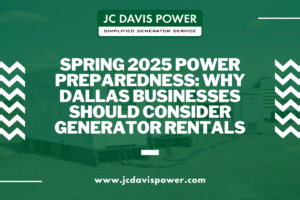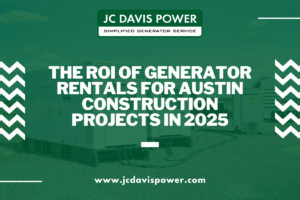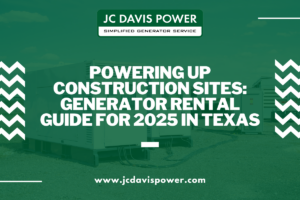Many of us don’t often take time to reflect on our careers, what it took to get here and where we’re headed. As part of an ongoing series we’re interviewing professionals who are building Texas and sharing their stories and wisdom for younger professionals to consider as they forge their own careers. Daniel is the vice president of pre-construction and business development at IE2 Construction, inc. and shares his experience transitioning from engineering to construction management, valuing business development as a skill, and giving back to the great state of Texas.
JCDP
How did you get started to get where you are today?
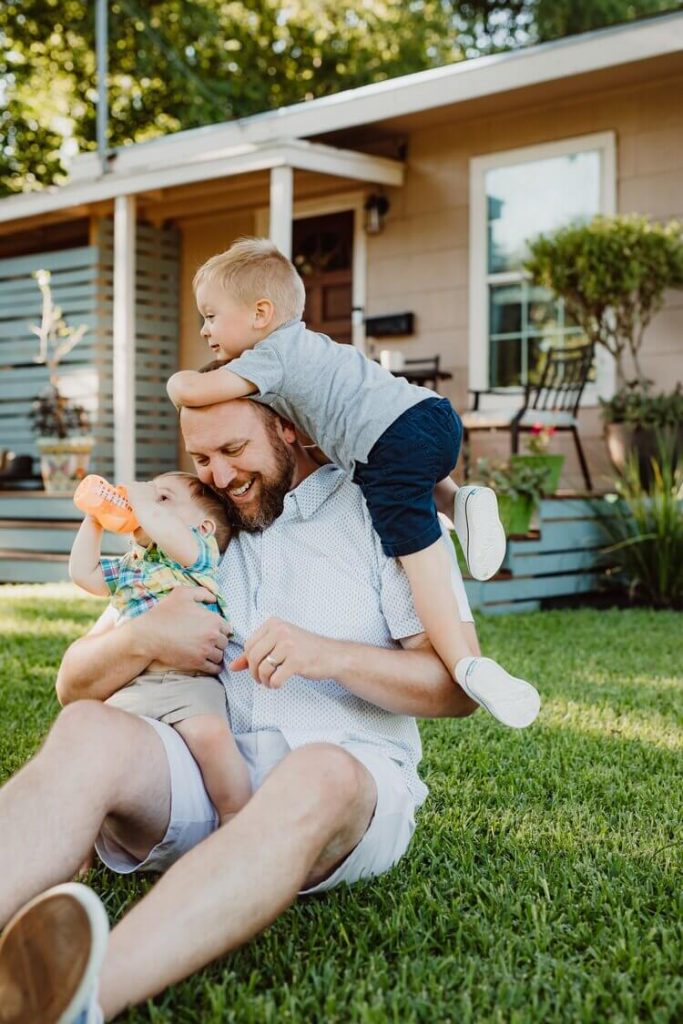
Daniel Carl:
I grew up in Austin and went to UT for mechanical engineering and wasn’t really sure what I was getting into. I knew enjoyed math and science, even though I didn’t come from a family of engineers of any sort. My parents are more focused in the humanities. Dad was a lawyer, mom worked for the State of Texas and ran a cultural exchange program. I ended up doing a co-op with a chemical engineering company in Tennessee and enjoyed it enough to continue with technical engineering. When I graduated, Austin was booming with computer and semiconductor businesses so a lot of people were going to work for Motorola, AMD, Applied Materials, Tokyo Electron, or Dell. I interviewed with a number of those folks and ended up accepting a job at Samsung.
Samsung had a rotation program where you could try out different parts of their business as a new hire, called the College Orientation Rotation Program. A class of about 30 new hires including myself, did some training together, and went through three different rotations in the wafer fabrication facility. Then you selected your job, assuming that department selected you as well. Part of the program was we got to go to Korea for a couple of weeks and see how the Samsung group worked there which was a great experience. I selected the project management group, which oversaw capital projects for the Austin Samsung facility. That ended up being a more traditional mechanical engineering job versus most of my peers who ended up working in the fab learning the semiconductor technology processes,. When I started my first project job was an ice-maker install and 8 years later my last project at Samsung was overseeing construction of a 500 million dollar facility.
Between that most of my experience was with industrial-mechanical engineering, design, clean rooms, and waste treatment systems. My body of experience there led me to get my professional engineering license, but I really gravitated to the project management side versus the hard-core design.
So, I had a good mix of design, project management, overseeing construction teams, and construction contracts. Samsung was unique because of the Korean influence, through which I got a cultural experience on top of the technical experience. So that’s where I was for the first eight years of my career out of engineering school.
The work was always interesting, but eventually I realized I didn’t have a very good perspective of other types of projects in construction and design. So, at that eight year mark I sought out something a little more broad and ended up at a big construction firm. And that was a great transition. Leaving my first job I had to take a lateral step because I hadn’t done a lot of the hard core, hands-on construction management work at Samsung, so it was humbling to find myself in less of a senior role for the first two and-a-half years. But it also gave me a chance to consider if I really enjoyed the work versus just seeking a change. And I decided I did like the work, as I started to be able to see the bigger picture.
At Samsung I noticed that there was a lot of movement between there and other semiconductor jobs, but people had spent their whole career in semiconductors. When I got to Beck I saw that you could do all different types of projects. And I realized for myself, even though I carried my engineering license, what I really enjoyed was helping solve the technical problems at a higher level than the detailed level of the design. I like identifying who could help solve technical problems and keep projects moving on schedule. So that helped me figure out where I really wanted to go I eventually progressed to be Beck’s MEP manager for central Texas. That gave me a chance to visit different jobs and support different projects, and I really started to see myself in more of a customer service role helping other project managers, helping clients define their problems better, and building relationships differently than I had the first 10 years of my career. At the same time, I went back to business school and got my MBA. I went to the Executive MBA program at McComb’s School of Business at UT Austin which was a great experience both for the education but also meeting people that I probably wouldn’t have had I not ventured out side of the design and construction world for a few years.
So I got my MBA, stayed with Beck, worked on some great projects, got to know great people, and picked up some great mentors, both technical and business oriented. I focused on building my network and thinking “Who do I need to network with and what’s important for our business?” It happened organically that I got to know owners, subcontractors, and all my peers, and that was very comfortable for me.
After several years at Beck the opportunity came to change jobs. I got recruited into BSA Life Structures, which was a national design firm that was trying to get a foothold in Austin. And they are a firm focused on health care, higher education, and research facilities. I had experience managing and interfacing with all of those types of projects so they recruited me to lead the office. Even though I really wasn’t a practicing designer, they needed some managerial leadership and some business development help. Based on my business school experience and the evolution of my customer service experience at Beck, I realized this was a good opportunity. I could test out if I really wanted to manage an office or run a business.
BSA is based in Indianapolis but has six offices across the country, so I got to obtain a national perspective. We grew our office from three people to twenty-one at our peak and went through an acquisition of a small architectural and interiors firm, which was a good experience to go through to bring in a different company with a different culture. I learned a lot from that, being the local lead in that acquisition. I was in BSA for six years transitioning from the technical aspects to a customer service position and an active project leader to more of an office lead and focusing on developing business. We went from zero to twenty six projects with UT, which was a big deal, and it gave me a perspective on the wider world of architects, owners, engineers, and contractors. All having to coexist. I think I always had a skewed view of what happened on the design side, and my experience at BSA gave me a very clear picture of what the design side was like and how valuable good design partners are. I led that office for several years and then there were some corporate changes as Covid slowed down some of the work.
Early this summer, the decision was made that my position was no longer needed for the way they wanted to lead the offices so I ended up leaving BSA and decided I was going to find a position back on the construction side. I considered more design, but my passion wasn’t the details and the design. I considered the owner side, which with my experience and perspective on projects, I tend to lean towards. But I most enjoyed the contractor side and had a lot of strong relationships with a number of contractors around Austin. So IE2 is where I ended up. I had more of a friendship with the owners than a hard core business relationship and when they found out that I was looking for something new we had a courtship during my Covid break and talked about what position I could fill in their organization.

IE2 is a mid-sized and growing contractor in the central Texas area with strong experience in multiple markets, health care being one that I obviously had experience in, but also some other markets that I thought were interesting, including nonprofit work and a number of projects in the creative space. So I thought this is a different opportunity than the more technical work I had done before. It felt a little more entrepreneurial. So we landed on a job where I would lead pre-construction and business development. For the organization, the two owners, Mike and Tom, split those duties, and it was a good opportunity to help them work on the business instead of in the business. It was probably the most exciting job transition I’ve had where I felt like this is an opportunity to help build and scale the company.
Also, a lot of my experience had been institutional projects and a many of there projects were traditionally private owners. So there was room to add some public and institutional experience to their portfolio. The project management, the superintendents, the estimating talent, they had all that, what I bring is a little connectivity to the more institutional side of Austin and my experiences over the last 20 years helping clients out.
We have a good separation of departments that stay focused on different types of projects. We have a multi-family group, we have a group we call Austin-politan, which is restaurants, breweries, and eclectic Austin spaces. And there’s something fun about being professionally interested and also engaged in the Austin community which I grew up in. There’s some advantage to being from Austin, but it’s less and less important as Austin has grown over the last couple of decades. And so I enjoyed being able to use my localness to help the organization.
JCDP:
Going back to your time at Samsung, you mentioned you started with an ice maker but by the end you were working on construction projects. How did that happen?
Daniel Carl:
My mechanical engineering mentor at Samsung pushed me to design projects. So as I was delivering the projects, soliciting bids and putting things together, I grew to enjoy bringing in the stakeholders with the group of end users, the subcontractors, and the designers. As I started leading projects, there was just a level of comfort as I brought other team members in and made sure everyone was working together. It just was natural to me whereas some of the guys preferred the design and others preferred more hands on coordination, like the very technical field coordination.
I enjoyed setting up the meeting where you got the end user to say yes to your plan and you were explicit about your logistics. This was observed by my senior director, who eventually became a VP for Samsung, so he saw that I enjoyed that and was able to deliver projects on time and with little drama. You want people to work together, but sometimes there’s conflicting agendas, I navigated that in a way to where he’s like “Well we’re going to keep you on the project management track”.
One of my peers became a very technical water engineer, another peer gravitated towards the chemicals and managing that organization, and I became the project generalist to deliver large capital projects.
JCDP:
Jumping to now with IE2, from the way you described it, it sounds like you have a good understanding of the needs of the organization and the strengths you can bring to match those needs. Did that come to you naturally or was it something that you had to learn?
Daniel Carl:
Earlier in my career I thought that if you present the right solution, it’ll be obvious to everyone and they’ll accept it. And somewhere along the lines at Beck, I realized that customer service was important and I realized that you got to meet people at the level of their understanding of the project or the situation. Sometimes I was anxious to deliver a finished result, I still am. I see where we should go and you’ve got to be willing to step into those people’s shoes and ask more questions that build up to where you want to be, to where I want to be. With my role here, I don’t think I always knew where I would fit in an organization or what my strengths were. But learning to be customer focused or client focused, or even team focused. The other thing is that in every project, whether it’s private developer or institutional, there’s stakeholders. There’s always competing interests. And you really have to align expectations and make sure there’s a common goal. I don’t feel like it should be a win lose situation. If you’re doing a good job of listening you can find some ways that everyone is successful on a project. Once you’re part of a project team, whether you’re the owner, the designer, the contractor, or even the subcontractors, you should all be trying to do what makes this a win for everyone.
So in my position, it’s being careful not to try to win at all costs, meaning when a job isn’t a good fit for us and we can’t support it the way it needs to be supported. There are attractive projects and we may not have the right personnel available. I have to be diligent, slow down, and make sure we’re aligned with a potential client. That’s probably one of the harder things to do, because I have a competitive streak that wants to win at all costs but sometimes winning is walking away early.
JCDP:
What was one of the biggest challenges you had early in your career? And how did you end up working through it?
Daniel Carl:
As an engineer, I thought that providing the right technical solution was enough. And I would try to solve the problem and walk away thinking I’m finished. In reality there’s a lot more to selling the solution that needed to be done. I would tell some of my colleagues later that anyone can solve the problem but if you want an owner to trust you, you need to make sure you’re solving or you’re listening to what they really want. They may not want to spend that money. They may not want the problem solved in that way. They may want to hold one of the other team members accountable and they may be asking you to do their dirty work. Taking the time to listen and validate or verify what you’re being told to do and why, goes a long way. I’ve seen people solve problems that weren’t the ones being asked to solve.
Looking back, I probably did that for people a lot. Some people are nice and will just say “OK, that’s good” or some people would be like “yeah, that’s not it, start over again”. So I had both experiences when I was young in my career.
JCDP:
What changes do you see happening in the industry and what are you doing to prepare?
Daniel Carl:
From a Covid standpoint the question of remote working ability in construction is a struggle since we have two sides of the coin for every project.
We have a project management side that’s largely administrative and in coordination with owners, jurisdictions, and the engineering team, and then we have a field site or supervision superintendent. For superintendents, remote work is never going to be an acceptable solution because part of their job is supervising the work on site.
It is possible to do a good portion of the work from a remote location but there’s some sacrifice. Because you don’t get to build those relationships of being on site. And if you miss out on some of the details or the interactions with your field team, subcontractors, or the owner know eventually.

So that’s something the industry is facing, how do you manage that if your project staff demands or wants to work remotely?
We’re navigating it and it’s not all or nothing at this point. It’s a certain amount of tolerance for remote working. But also, we’re just such a results driven industry that, if your project manager can spend less time on site, but still deliver results, you’re probably more willing to try it out. And vice versa, if you’re not getting results, you’re going to demand that project managers are on site and stay connected to the work.
From a technology perspective the industry has been trending towards integrated systems or building information modeling. And in my job now we’re using new estimating software. But you still need to interact with other teams and this whole idea of a virtual meeting online, we were already doing a lot of that stuff. Much of this stuff used to be done in silos, by the design team or by subcontractors, but now it’s really incumbent upon the contractor to bring everyone together and use the technology for the benefit of the client or the project. Twenty years ago the contractor depended on the design team to provide all the details and then a lot of institutions asked for the contractors to participate because they were hearing their feedback that things weren’t necessarily perfect in the drawing world and wanted to fix them before they got out into the field. So we brought subcontractors and contractors to the table and the process has evolved.
And now it’s possible to eliminate a lot of the installation inefficiencies by working together early with the contractor and the designer and doing clash detections and so forth.
But that will probably be even more important because we’re spending just a little bit more time on the computer, it makes it easier to do those things. Whereas before we saw it as a drag or an extra thing, now it’s like, let’s do this stuff early. So it is probably going to short circuit the adoption of some technologies.
JCDP:
And what advice would you give to yourself starting out?
Daniel Carl:
What took me a long time, probably a decade or more was valuing business relationships and selling, valuing that as a skill set. I took it for granted.
I thought that client relationships were easy to come by and when I started an office, I realized there is value in developing business, and I don’t think I had that perspective for nearly the first 10 years of my career.
So I worked to build a great network. And it wasn’t until after I was in a position to try to win work that I realized how important that network was and I probably would have put a stronger emphasis on building a network earlier and learning more about what different people are interested in or what’s their motivation.
In business school I found myself interested in accounting class and I thought I was just going to do it because I had to. But the professor made it really interesting, there was a story being told in the accounting. And of course, I love strategy. Coming from a problem-solving engineering background, that’s a transition I’ve had over the years.
JCDP:
Is there anything else you would like to highlight?
Daniel Carl:
Much of where I am professionally is about the things I did outside of work over the last twenty years. As an example, I joined the Young Men’s Business League in my 20s and still have great relationships with many of the guys I met in that organization (including Tom Marvle, COO of IE2). In YMBL there was a focus on networking amongst peers, but also raising money for the Austin Sunshine camps. Through that, I also got to work as the owner’s representative for a new Austin Sunshine Camp Building in Zilkner Park. Prior to that, I had been the YMBL race director for the Bun Run for which allowed me to use some skills from my work life to serve the community. So whenever we’re approaching clients I think “how can I use this experience to serve the community as well?”. I try to stay engaged in other areas of the Austin community as well. I spent the last five years working on the planning a project for the Jewish Community Center of Austin which is now coming to fruition. Volunteering is great for people looking for an outlet or connection outside of just work and sometimes the best things are totally unrelated, like directing a race that didn’t have anything to do with construction or engineering. But it was fun. And sometimes they could be directly related, like overseeing projects in a pro bono capacity. So like I said, I’m happy to be in a place where I can help build the community I grew up in.
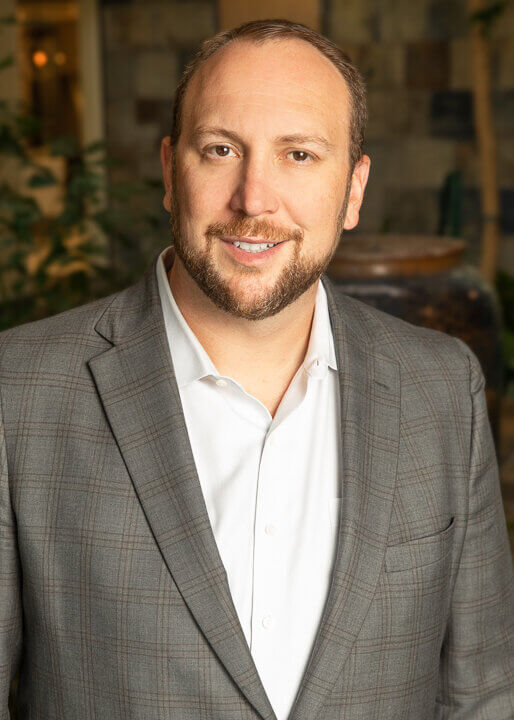
“Early in my career I thought that if you present the right solution, it’ll be obvious to everyone and they’ll accept it. And somewhere along the lines at Beck, I realized that customer service was important and I realized that you got to meet people at the level of their understanding of the project or the situation.”
There’s so much development here, there’s no hidden secret in Austin, Texas, anymore. So hopefully we can preserve some of the great things that have been a part of Austin for generations. I hope we don’t lose all the restaurants and music venues, because it’s nice to have cool stuff. We need to always consider what’s worth keeping, so I’m happy to see developers or business owners who want to revitalize an older brand or building something that recognizes the history, and sad to see shops go away or some different restaurants and venues that aren’t able to sustain through this Pandemic.
I also participated in the leadership Austin Essentials class in 2011 and got a broad understanding of civic and public issues in Austin combined with some leadership training and leadership principles.
The McBee fellowship was a program through the Austin Area Research Organization (AARO). The program is a deeper dive into some very specific civic issues, government and social issues that the Austin region faces and that gave me a great perspective on the issues that central Texas faces particularly regarding transportation and water.
From a transportation side, we can’t all be driving our cars everywhere all the time. And we’ve had this reprieve from awful traffic with Covid, but it’s coming back. We consistently don’t want to pay for the infrastructure, but there are really good facets of these programs that include rail, new roads, and modernized bus programs. We need to be having this conversation now, because we won’t have any way to get to places in a reasonable time if we don’t create new options and so you tell people who don’t think they’ll ever ride mass transit, you don’t have to ride it, but you certainly want a dozen people, two dozen people, 100 people who do want to ride it to have that option so that they’re not fighting you for space on the road when you want to drive by yourself, which is the situation we’re all in right now. We’re all mostly alone parked on the highway, and there’s a better way, but as long as we say “We don’t do that in Texas”, then we’re missing the opportunity to move forward. And there’s a trade off. Reasonable people know that this will impact taxes here and we have to consider that when creating these solutions. Things like infrastructure don’t come for free so we have to consider that.
And then with water. The thing that opened my eyes was that Austin doesn’t get its water from the Edwards aquifer, it comes from the Highland Lakes. There’s a whole world of bureaucracy and a complex network of utility infrastructures behind every source of water. And it’s not an unlimited resource. Clean drinking water from the tap is a huge benefit, but it’s not in the whole state of Texas. And it takes work to make sure that it’s readily available. But it’s a complicated network of state water management that has to be tended to. And just looking at central Texas, for the most part, people take it for granted. I learned we shouldn’t. It’s certainly nice that it’s mostly available all the time but we also have to understand that certain events, natural or otherwise, could impact the availability of fresh water. If people want to learn more they should check out the State Water Board.
As we build Austin, you just can’t take for granted everything that is available, you have to be willing to get involved and fight for the Austin you want to live in.
Daniel is the Vice President of Preconstruction and Business Development at IE2 Construction, Inc.
Links:
